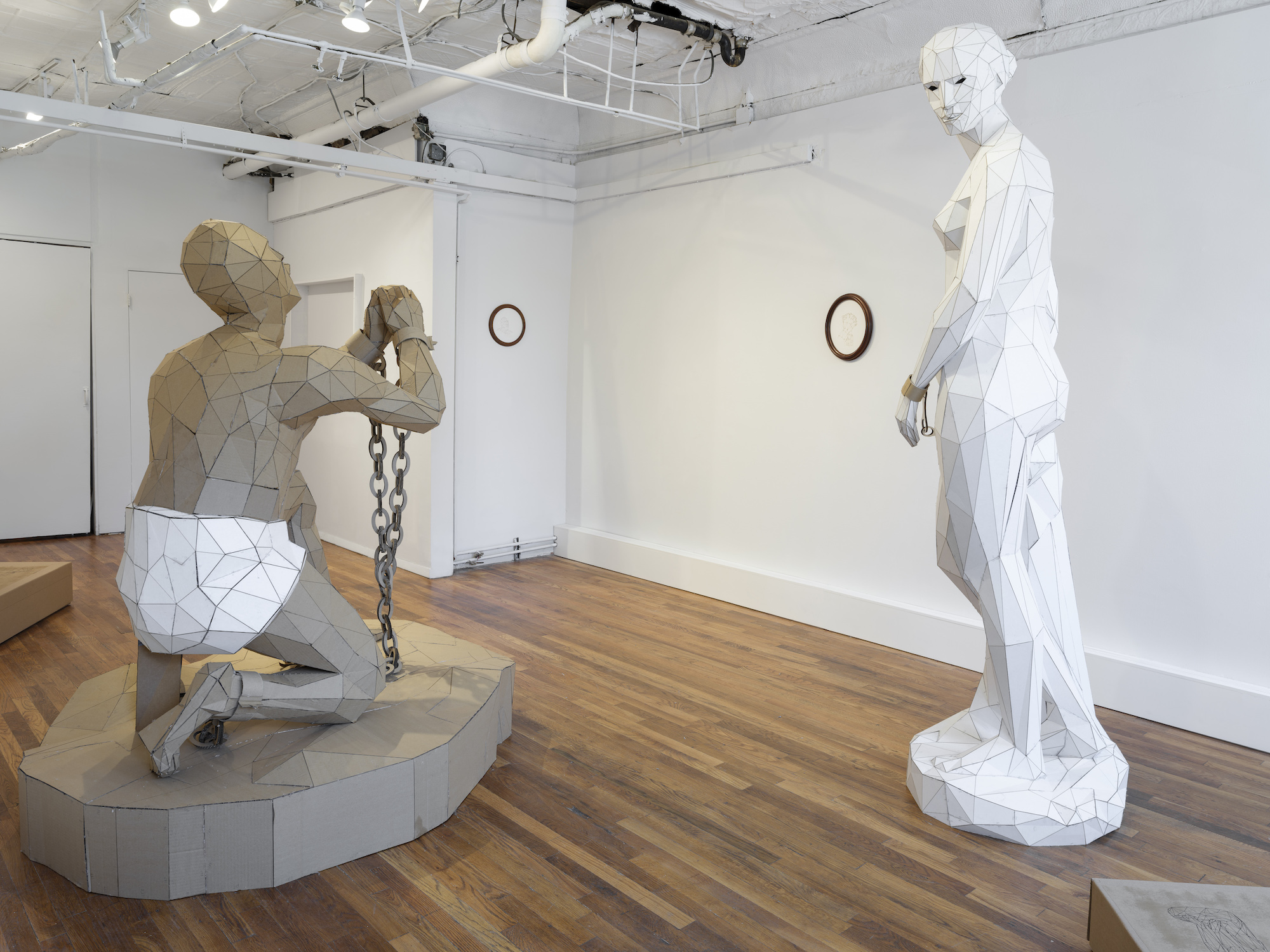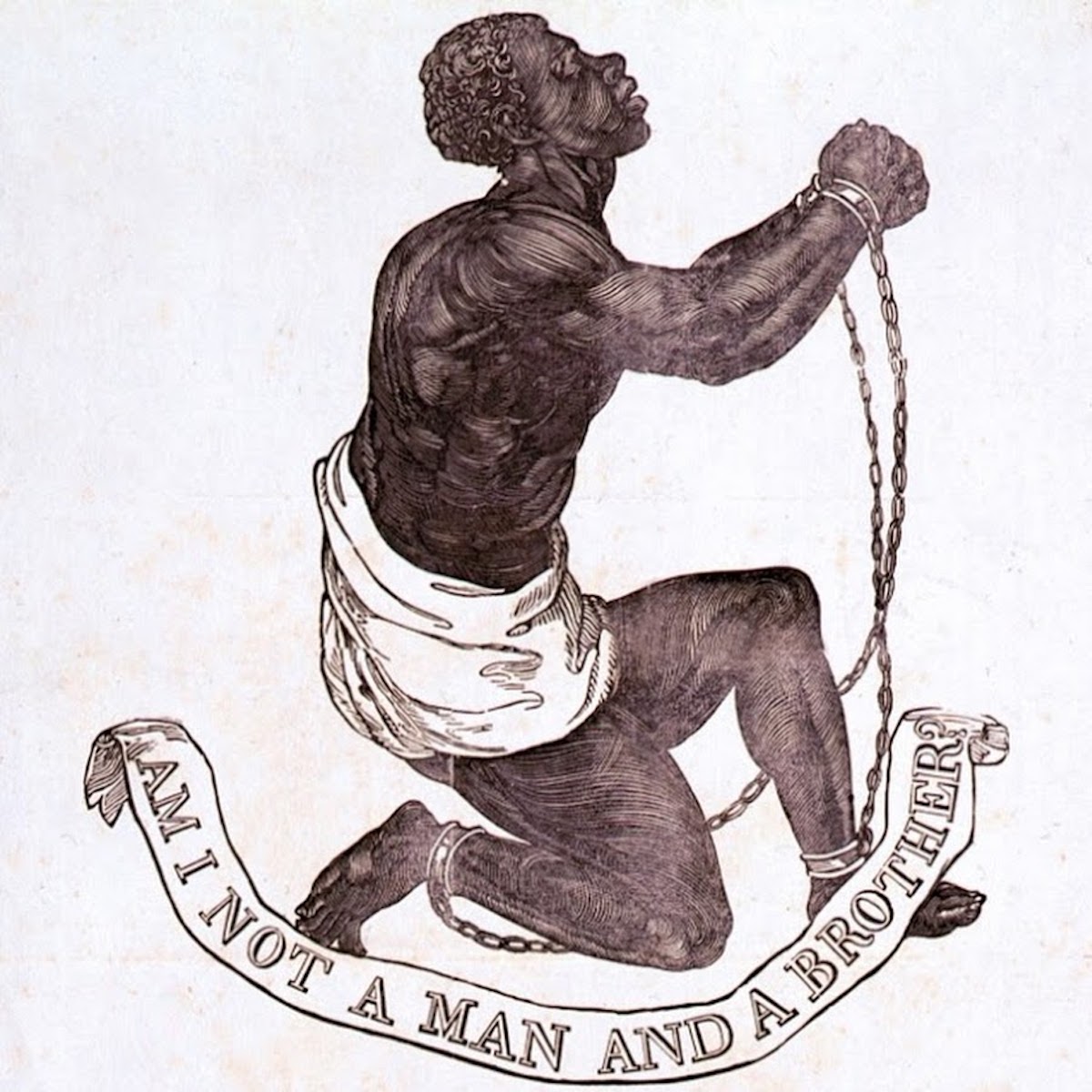
Roberto Visani’s cardboard kits based on art historical depictions of enslaved people consist of flat pack sculptures that can be assembled and disassembled as easily as Ikea furniture. Two works from the series, currently on view at Geary Gallery in New York City, recreate famous symbols of the abolitionist movement designed by white artists: Josiah Wedgewood’s 1787 seal for the Society for Effecting the Abolition of the Slave Trade and American sculptor Hiram Powers’s “Greek Slave” (1841-73).
By appropriating and reinterpreting abolitionist imagery through a reproducible, DIY medium, the artist prompts a fresh look at the history of slavery, its modern repercussions, and the white savior narrative that still pervades society and popular culture.

While the image conjures “eventual emancipation,” Visani explains, “it also depicts the enslaved African as begging for their freedom, pleading for the kindness and generosity of others so that they might be set free.”
“There are all these crazy politics around victimhood that I wanted to try and neutralize,” Visani told Hyperallergic. “I started thinking of the material metaphors between cardboard and the human body — the color brown and the Brown Paper Bag Test. The idea that cardboard is cheap and recyclable and supplies are seemingly limitless.”

In “cardboard slave kit: abolitionist blend”(2020), Visani replicates the kneeling male figure in chains in “Am I Not a Man And a Brother?”, Wedgewood’s ubiquitous 18th-century medallion for a British anti-slavery campaign. As curator Sara Reisman notes in her essay for the exhibition, the design is based on the “supplicant slave” trope — a motif that dominated public perceptions of both slavery and abolition in Britain.
While the image conjures “eventual emancipation,” Visani explains, “it also depicts the enslaved African as begging for their freedom, pleading for the kindness and generosity of others so that they might be set free.”


The second piece, “cardboard slave kit, h powers blend” (2020), is based on Powers’s controversial monument to the Greek women enslaved during the war of independence with the Turks in the 1820s. Decades later, in the Civil War era, the statue became an abolitionist icon.
Visani’s towering cardboard sculpture is based on the second version of “Greek Slave,” a full-scale marble in the collection of the Brooklyn Museum that replaces the linked chains in the original with a straight bar manacle associated with the American slave industry. Despite this detail, Powers’s choice to portray a white Christian woman might reveal his reluctance to confront the legacy of anti-Black racism and chattel slavery head-on.

Visani’s process involves digitizing the source image using 3-D modeling software and translating the designs to cardboard that can be flat-packed and boxed. The results are uncanny artworks that evoke the assorted aesthetics of classical art, mass-produced objects, and technology. Their tessellated surfaces strike us as oddly familiar, recalling the jointed wooden mannequins used in figure drawing or computer-generated vectors of the human body; they re-contextualize and abstract their references to a painful history. Along with the sculptures, Visani has produced a group of laser-cut detail drawings mounted in antique oval frames.

Visani, who also teaches art at John Jay College, built some of the first prototypes with his students, documenting and discussing the work with them. He always envisioned the project as interactive and didactic, an art form that could be easily replicated and transported in schools, museums, and other public institutions.
“Figurative sculpture has a long tradition of being activated by its audience — masks, shrines, Virgin Mary festivals,” he said. “One of the things that drew me to the ‘Am I Not a Man and a Brother’ image is that it has been looked at and looked at over and over. It’s not teaching us much new as it is, but I think making it as a digitally reproducible sculpture, the durational experience, and sharing that experience with others would potentially teach us all kinds of things.”
“I have this fantasy of the project existing between exhibition space, education department, and gift shop,” Visani added. “We set all these artificial hierarchies and boundaries in our lives. I like the idea of art crossing them.”
The sculptures are on view in Do It Yourself: an introduction to the cardboard slave kits at Geary Gallery on the Lower East Side through June 26.
0 Commentaires